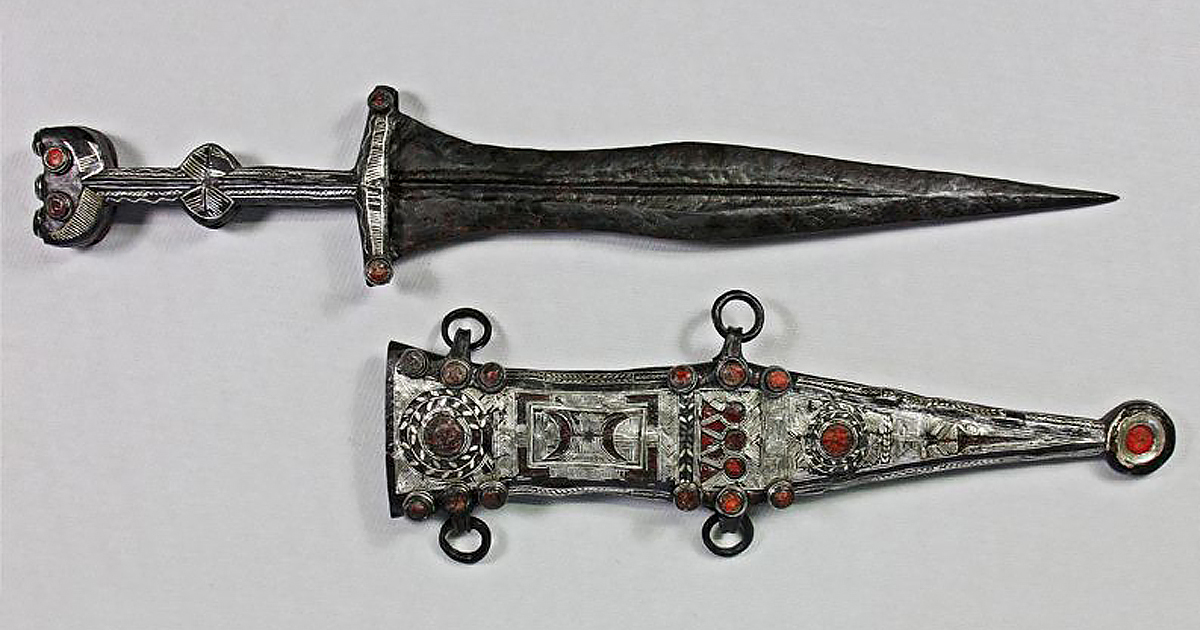An archaeology intern named Nico Calman found a 2,000 year old Roman dagger, still in its sheath, in April, 2019. However when he found it was nothing more than a lumpy, rusty clump that was noted to look like a “chicken tender”. It took nine months of careful restoration work for the dagger’s true beauty to be revealed. The restored dagger and sheath is a night and day difference between how it looked when it was first unearthed.
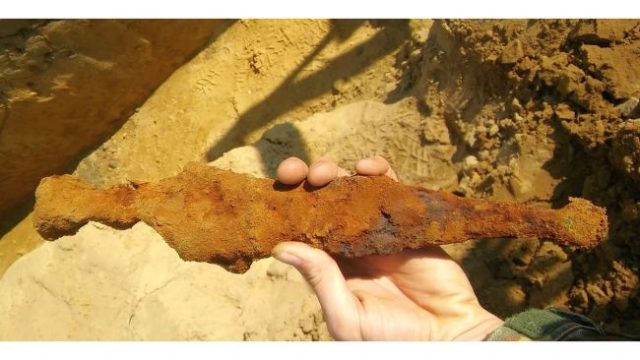
Calman found the prize while he was exploring a trench at a site in Germany, near Munster, which was once right on the edge of the Roman Empire. Soldiers were buried there because a military base was located near Munster, which is near the Haltern at the Lake dig. It is such an important archaeological site that there is a Roman History Museum in Haltern.
The team on the dig is from that organization, specifically the Westphalia Department For the Preservation and Care of Field Monuments, and the University of Trier. Calman is only 19 years old, yet he made a discovery that other archaeologists have hailed as groundbreaking.
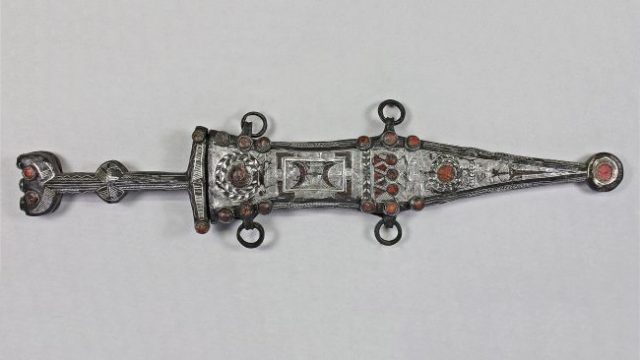
A senior archaeologist on the dig, Bettina Tremmel, told news website livescience.com that when they saw Calman’s discovery, the entire team became “emotional…. We were at a loss for words,” she said. That assessment of the importance of the find was confirmed by Michael Rind, director of archaeology at the Westphalia-Lippe Council, in an interview with the New York Times in late February.
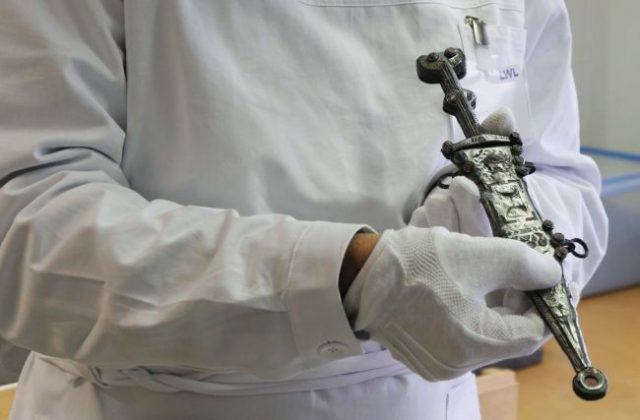
“This combination of a completely preserved blade, sheath and belt, together with the important information about precisely where they were found, is without parallel,” he told the news outlet. Upon discovering the sword, the team immediately turned it over to professional restoration workers, who have spent nine months bringing the weapon back to its original glory.
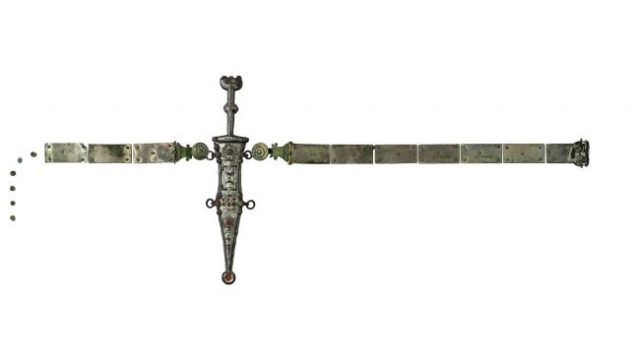
The experts say that, rather than an actual battle weapon, the Roman dagger was likely used when long swords were dropped, broken or taken by the enemy, as its short blade (13 inches) was designed for close combat. Although it’s many, many centuries old, it now looks almost exactly as it did when it was in the hands of its owner, thanks to sandblasting and other measures taken by the restoration team. The iron dagger is encrusted with silver and semi-precious gem stones, and in all likelihood was carried by a soldier of high rank and status, since it was found in a grave.
As Tremmel explained to livescience.com, “It was not the normal practise for Roman soldiers to be buried with their military equipment,” she said. Therefore, this particular soldier, and this particular weapon, must of been of considerable importance. She expressed almost awe that Calman found such an important antiquity. She said, “Imagine: though thousands of soldiers were stationed in Haltern over almost 15 years or more, there are only a few finds of weapons, especially complete and intact ones,” she told livescience.com.
Related Article: The Iconic Stiletto Dagger – Weapon of Choice Among Medieval Knights
Haltern is an incredibly rich, historic archaeological site, one that has now, in all likelihood, given a major boost to a young archaeologist who is just beginning his career. Should his luck continue in the coming years, who knows how far Calman will go in his field? His latest find will be on display at the Roman Museum in Haltern in 2022, the team confirmed.
